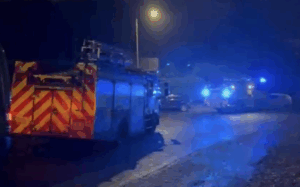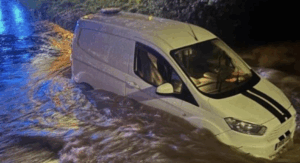In an historic achievement, the United States has successfully retrieved rocks and dust from an asteroid and delivered them safely to Earth. NASA’s OSIRIS-REx sample capsule, carrying a precious sample from the asteroid Bennu, made its triumphant return, touching down on the Department of Defence’s Utah Test and Training Range at 10:52. EDT (08:52 MDT).
Radar data from the Utah Testing and Training Range confirmed that the capsule executed its planned entry into Earth’s atmosphere at 10:42. EDT (08:42. MDT), off the coast of California.
The remarkable mission began with a U.S. Air Force munitions specialist being the first to disembark from a helicopter. His crucial task was to meticulously identify and clear the vicinity around the capsule, ensuring the removal of any potential munitions remnants from previous military training activities. Additionally, he marked a safe approach path using small flags for the OSIRIS-REx team members who would soon be working with and around the capsule.
Following the munitions specialist, a Lockheed Martin engineer approached the capsule to inspect its condition and assess gas levels in its immediate vicinity. Clad in heat-resistant gloves, she took precautions in case the capsule was still hot from its interaction with Earth’s atmosphere. She also wore a gas mask as a safety measure in case the capsule’s battery had incurred damage, potentially releasing noxious gases like sulfur dioxide.
To safeguard the precious sample from potential contamination, the Lockheed engineer secured covers over the capsule vents, designed to allow filtered air into the capsule to regulate pressure during its journey to and from space through Earth’s atmosphere. She also protected the canister where the parachutes were stored, both of which successfully separated from the capsule as planned.
The next step involved the rest of the team approaching the capsule to prepare it for transportation to a temporary clean room on the military range.
The smaller of the two parachutes onboard, the drogue parachute, opened after atmospheric entry to aid in stability and later separated from the capsule. The main parachute deployed at 10:47 a.m. EDT (8:47 p.m. EDT), significantly slowing the capsule’s descent to approximately 11 mph by the time it gently touched the ground.
With the sample safely secured and the surrounding area deemed safe, NASA’s OSIRIS-REx team executed the meticulously coordinated recovery process, one they had practiced extensively over the past year. They carefully placed the 100-pound capsule into a secure metal cradle, wrapping it in multiple layers of protective Teflon and a tarp.
As part of the mission’s post-landing procedures, three scientists from NASA and the University of Arizona, accompanied by a military safety specialist and helicopter pilot, remained at the landing site. Their mission involves collecting soil and air samples from the immediate area to catalog any potential contaminants that the capsule may have been exposed to during its journey. This meticulous examination is essential as scientists analyze the chemical composition of Bennu’s dust, aiming to search for molecules that could shed light on the origin of life on Earth and beyond.
Many of these sought-after compounds are abundantly present in Earth’s environment, underscoring the necessity of preserving the sample’s integrity and minimising environmental contamination. NASA’s OSIRIS-REx mission marks a monumental milestone in humans ongoing exploration of the cosmos and the quest to unravel the mysteries of the universe.





































